Off the Beaten Path in Osaka: Hidden Gems & Japan’s Original Gelato Shop
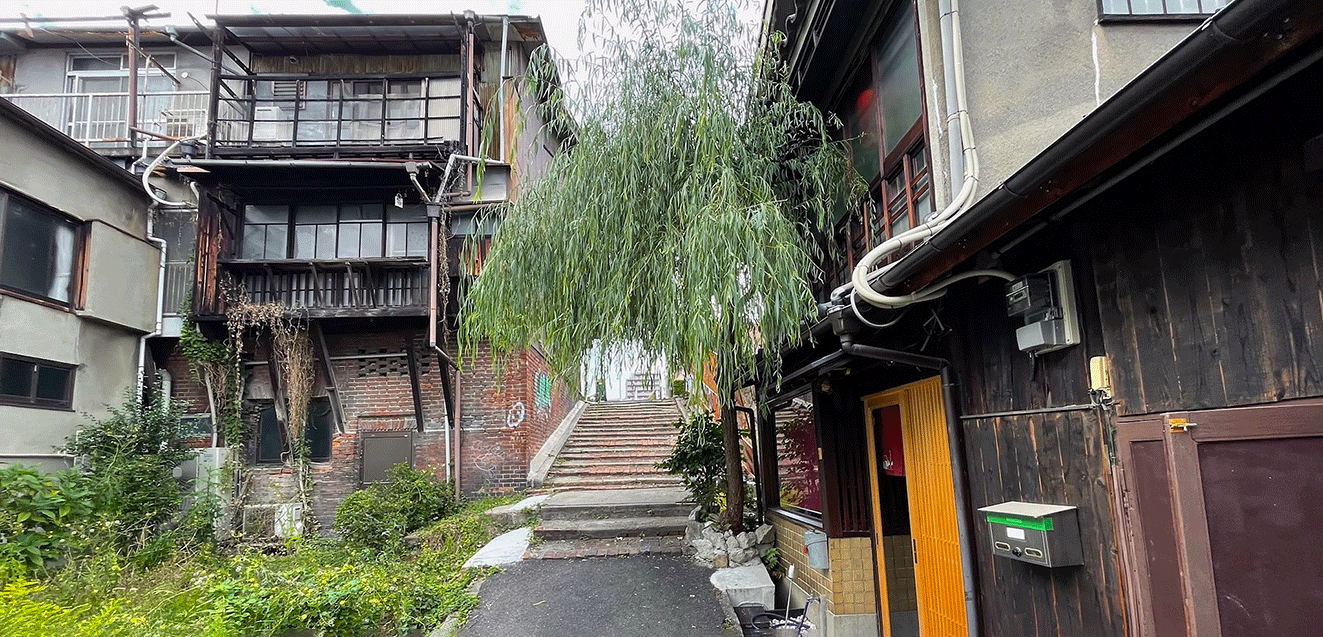
Discover an unexpected food adventure in a hidden corner of Osaka, where Japan’s gelato story began nearly 40 years ago.
I recently spent a glorious month leading two Unexplored Japan trips through the treasure-filled hamlets along the Sea of Japan. At the end of that month, on my last half-day in Osaka, I woke quite unexpectedly wanting to have gelato. Why gelato? I’m not sure. Perhaps it was because I’d been savoring so many amazing Japanese feasts that I wanted something different, but for whatever reason, I had an intense desire to eat gelato before my journey to Osaka airport and back to San Francisco that afternoon.
So I opened Google Maps and typed “best gelato in Osaka.” Of the two dozen choices that appeared, one shop looked especially beguiling. It had a bright orange awning proclaiming “GELATO ESPRESSO … Circo D’oro” with an Italian flag in the middle, and photos of delicious-looking cups of pistachio, chocolate, yuzu, raspberry, and other glistening flavors. The shop was only 25 minutes away by subway, and I had six hours before I needed to board the bus to the airport, so I decided to embark on one last adventure, an Osaka Gelato Quest — and I’m so glad I did!
Exploring Osaka’s Hidden Neighborhood Gems
When I reached the stop at Tanimachi 6-chome, I emerged into a world with an atmosphere all its own. The area seemed quieter than the other Osaka neighborhoods I’d been in, with a slow, almost country feeling to it. The subway stairway ended in a covered shopping mall that was just one block long, so different from the sprawling, swarming, mile-long malls I’d been in. Many of the shops were still shuttered, but a few — a florist, a bakery, a café – were open, and at each a handful of customers was cheerfully chatting away, seemingly there as much for the conversation as for the chrysanthemums, croissants, and cappuccinos.
Seeking Out Local Flavors
As I followed the route on my map, a delicious scent wafted toward me. It filled my nose and lured me toward it like a character in an old cartoon floating towards the scent of a hamburger or an apple pie. In this case, the seductive scent was curry and it transported me to a delightfully old school building whose red awning said it had been founded in 1980.
But I was on a mission to eat gelato, so I resisted the curry and followed my map across the street – straight toward a fruit and vegetable store called Tomato Kazoku, or Tomato Family. The display above its entranceway was irresistibly adorable, showing a giant carrot, eggplant, tomato, radish, and squash. How could I not enter?
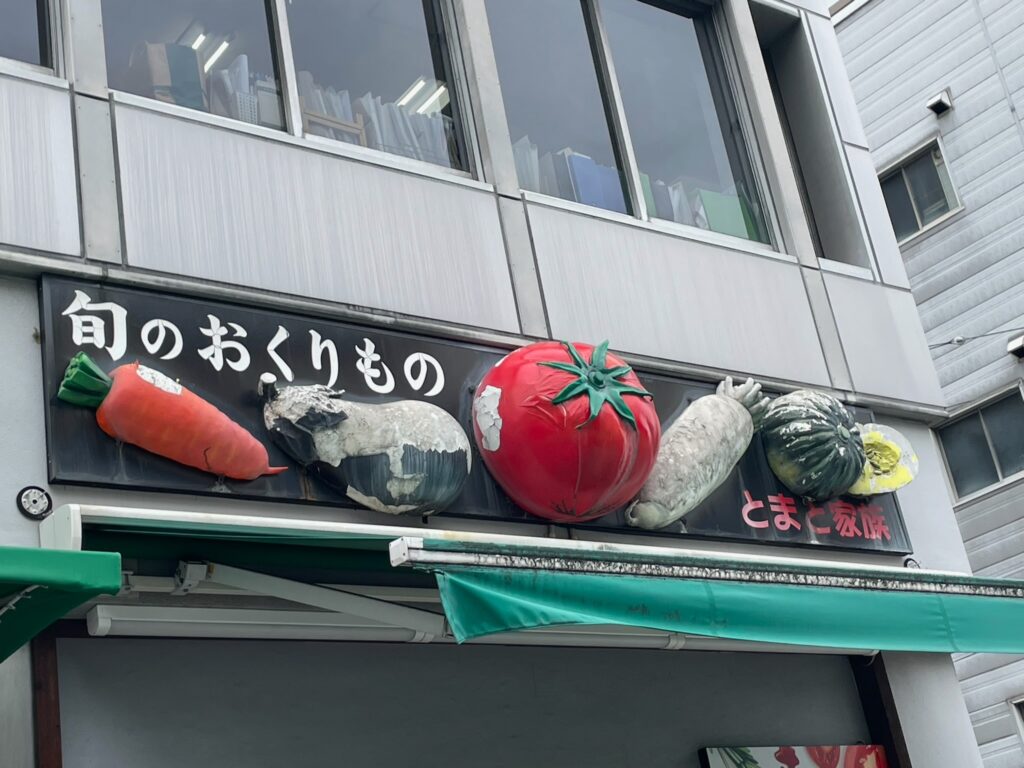
Inside, I found a down-home, neighborhood kind of store with neatly arranged baskets of just picked-produce – huge radishes and glistening orange carrots, shiny onions, eggplants, and tomatoes, plump persimmons and nashi pears. Here too the customers were amiably chatting with the shop workers. How is school going? Did you see the game the other night? You should try this sauce – it’s really delicious! A gentle and jovial atmosphere prevailed.
But I was on a gelato quest! I tore myself away and followed my map past a hair salon, bicycle shop, Family Mart convenience store, and ramen restaurant to my destination, Gelateria Circo D’oro, where I was greeted by that bright orange awning and an Italian flag fluttering on the sidewalk.
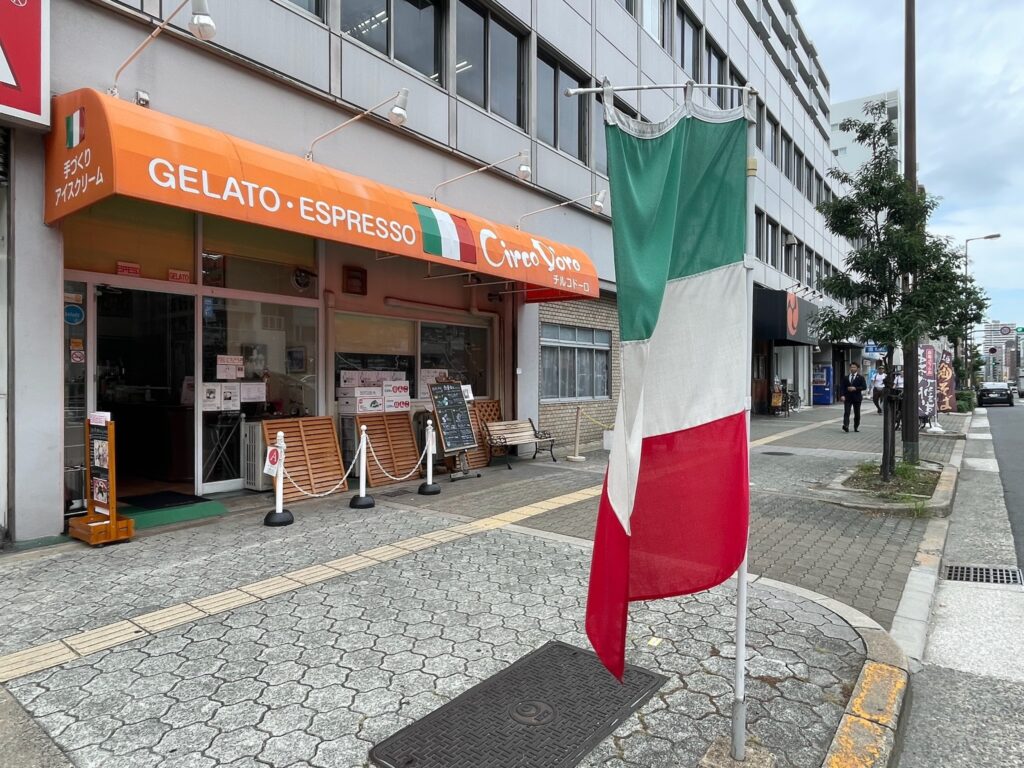
Discovering Japan’s Original Gelato Legacy
I opened the door and entered a gelato wonderland, a space about the size of a walk-in closet crammed with cups, books, trophies, an espresso maker, two tables with two chairs, and a freezer case full of multi-hued cups of gelato. The walls were crowded with photos and posters showing Italy – Firenze, Taormina, Roma, Milano, Napoli, and many more — and an exuberant handwritten menu announcing the current flavors, which included pistachio, almond, apple, and pumpkin.
A smiling, bespectacled man greeted me and asked what I’d like to have. I told him this was my first time visiting his shop and asked him what he‘d recommend.
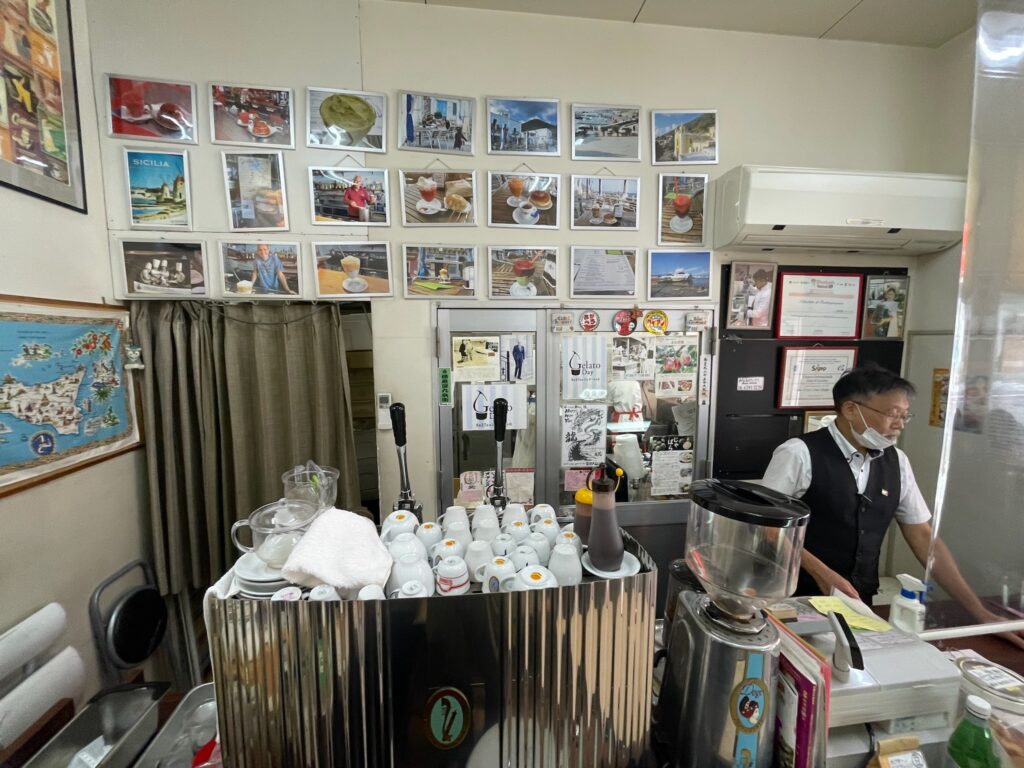
“Well, our pistachio is very popular,” he said, “and so is our Malena, made with Sicilian almonds. And then there’s our Amore della Luna, which is a bitter chocolate gelato with just a hint of sake. It won fourth place in the International Gelato Competition in Rimini, Italy, in 2011.” He paused to let that sink in. “We have all kinds of toppings too.”
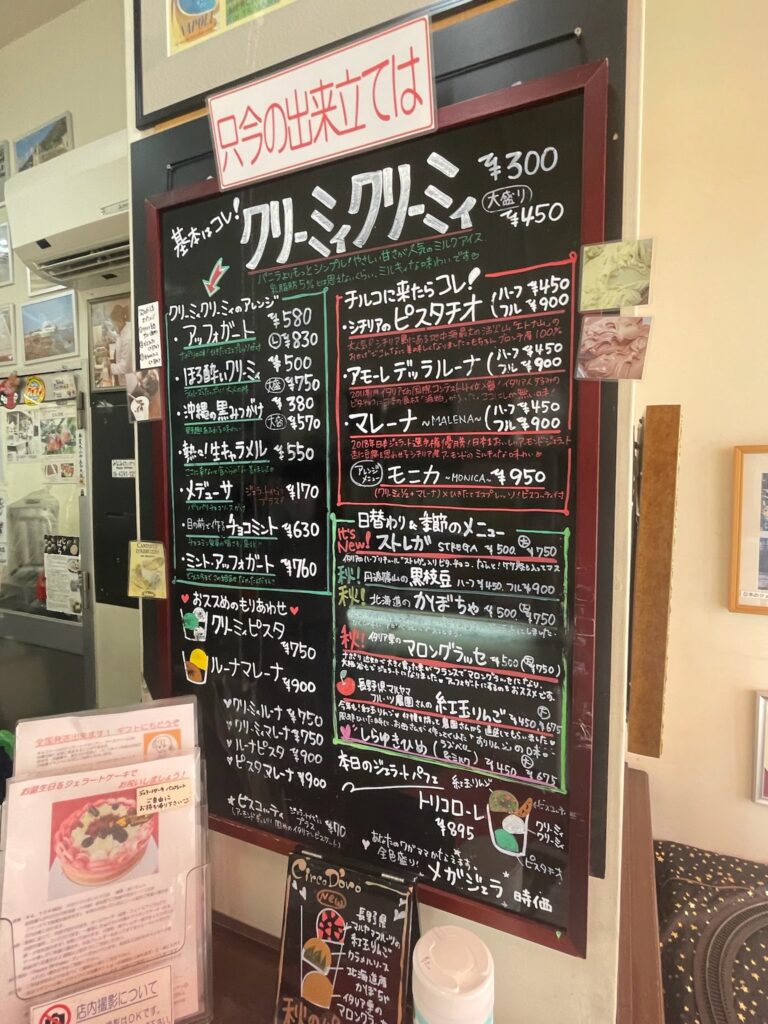
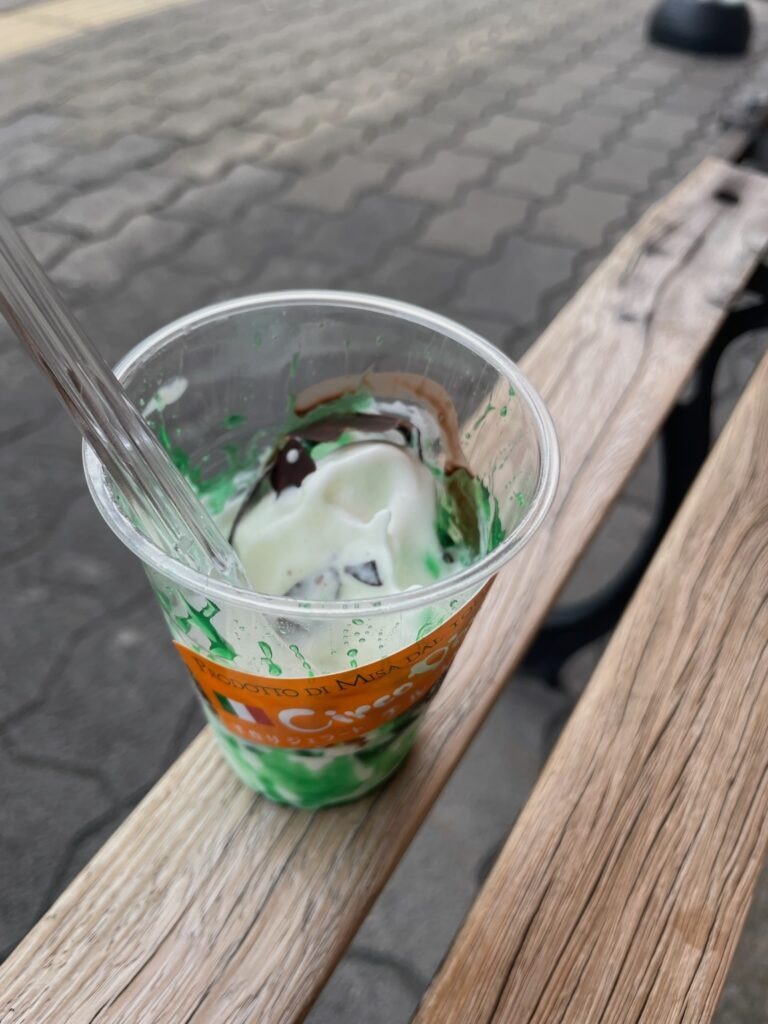
After examining the dozen flavors and topping options, I settled on a “Creamy Creamy” gelato made with fresh Hokkaido milk, topped with a rich green mint sauce and then hot chocolate sauce on top of that. The proprietor said that the hot chocolate solidified when it came into contact with the gelato, so it made a hard crust, and that reminded me of the chocolate-dipped soft serve ice cream I used to eat at the Dairy Delite drive-in in Woodbury, Connecticut, when I was a boy. I used to love breaking that crust, so I ordered the Creamy Creamy special, and then I asked the proprietor how long the shop had been in business.
A Pioneer’s Tale: The Birth of Osaka’s Gelato Culture
He looked at me with a gleam in his eye.
“Thirty-nine years!” he said. “My sister” – and he pointed his thumb behind him towards the adjoining room, where I could see a woman busily working – “was the one who started the gelateria. She visited Italy in 1984 and again in 1985, and she fell in love with gelato!” He chuckled. “When she returned after that second trip, she decided that Osaka needed to experience gelato, and she opened the very first gelateria here in July 1985!”
“Wow, that’s wonderful!” I exclaimed. “But that must have been so tough, introducing gelato to the Japanese.”
“Oh yes!” he said, with a slight grimace. “Back then, the Japanese didn’t know anything about gelato. They didn’t even eat ice cream! In fact, eating a cold sweet wasn’t even an idea in Japan! At that time, sweets meant mochi balls or manju buns with red bean paste inside.”
For the first few years, he continued, it was very tough introducing gelato to the Osaka palate, but his sister persevered and over time gelato caught on. “Now it’s a very popular dessert. Even in winter there’s a steady stream of customers,” he said, and his face broke into a sweet smile.
How incredibly serendipitous, I thought, that my Osaka Gelato Quest had led me to the original gelateria in Osaka and the woman who had actually introduced gelato to the city!
That passionate pioneer handed my concoction to her brother through a small opening between the two rooms, and he handed it to me with a slight flourish. “Enjoy!” he said.
For a moment I held the cup in my hands, studying its swirling combination of white, green, and brown. Then I gave a slight bow, dug into the creamy concoction, scooped out a satisfyingly tricolored spoonful, and closed my eyes.
Oh my goodness!
The combination of the milky Creamy Creamy with the sweet mint sauce and then the rich, smooth, hard chocolate sauce on top was intoxicating.
As I wolfed it down, the brother pointed to the trophies displayed around the tiny room. “My sister has won many prizes in Italian gelato competitions,” he said proudly. Then he paused and continued in a softer voice, “She’s so passionate about gelato…” He turned and gazed fondly at the figure bustling behind him. She beamed at us from the other room.
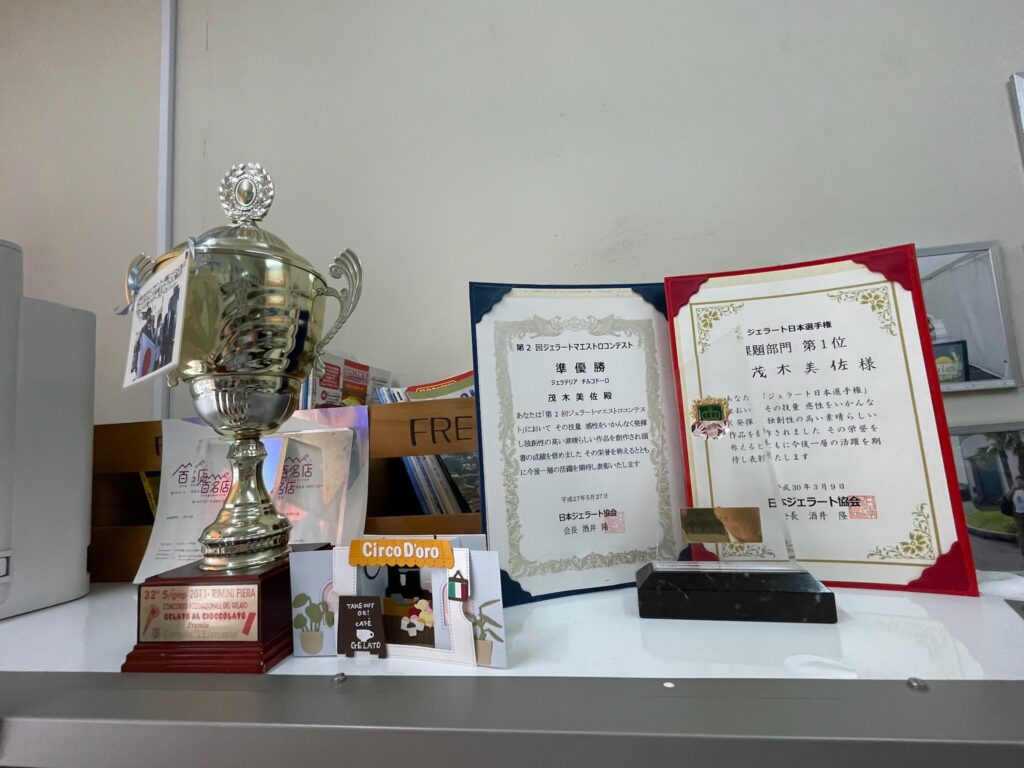
Preserving a Family Passion
As I was walking back to the subway, I saw an intriguing café called Beans Café. The proprietress greeted me warmly when I entered, and told me that her mother – the silver-haired woman who was smiling benignly at us from behind the cash register — had started this shop decades before to sell beans. When that business began to falter a few years ago, the daughter had taken it over, continuing to sell beans but expanding to sell coffees and then even farther to create a pop-up outlet for various local artists and craftsmen. She now displayed and sold the works of one of these craftsmen – potters, weavers, wood workers, and more — every month. Business was brisk, she said, and it was a great way to keep her mother’s passion alive and at the same time support neighborhood artists.
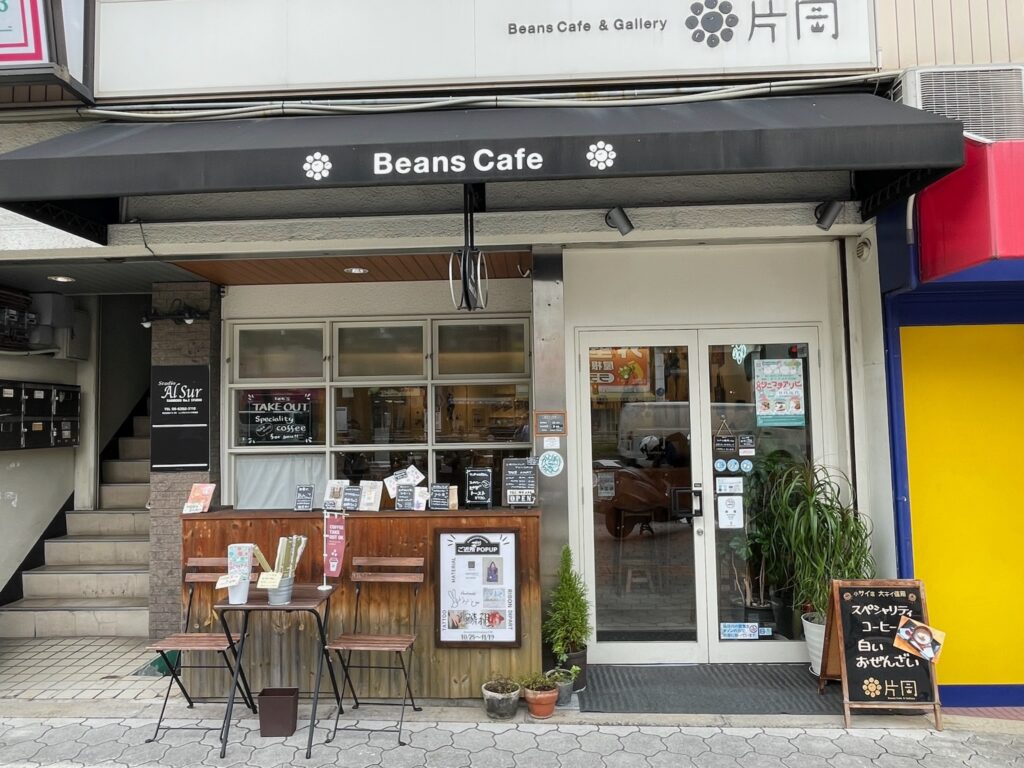
I told her that her shop was inspiring and that I really loved the atmosphere of the entire neighborhood. “Yes,” she said. “It’s a special place that combines old buildings filled with new dreams.”
Traditional Japanese Curry: The Troublesome Perfection
I was feeling so good that I let the scent of the curry transport me inside the curry restaurant, Karei Ya. Inside there was a long U-shaped counter and three tables, with seats for about 30 patrons. The chef’s jaw dropped when I walked in the door, but the three waitresses welcomed me heartily and bade me sit at the counter.
One pointed to a menu posted on the wall, which offered just half a dozen curries. I ordered a katsu pork cutlet curry and reveled in the interior, which looked like it hadn’t changed since 1980. My waitress placed a glass of water before me, along with a spoon wrapped in a delicate paper that had Japanese lettering on it. As the waitresses bustled back and forth and a somber succession of salarymen and students entered, sat, ate, and left, I used Google Translate to read the writing on the paper:
The troublesome “curry”
Why is the troublesome “curry” handmade?
When it comes to making curry, he is adamant about putting in more effort than necessary and strictly adhering to making everything by hand.
A good example of this is curry roux that has been simmered for a long time, allowing it to quietly rest and mature in the refrigerator for three days and three nights.
A restaurant serving authentic, well-seasoned curry
Karei ya
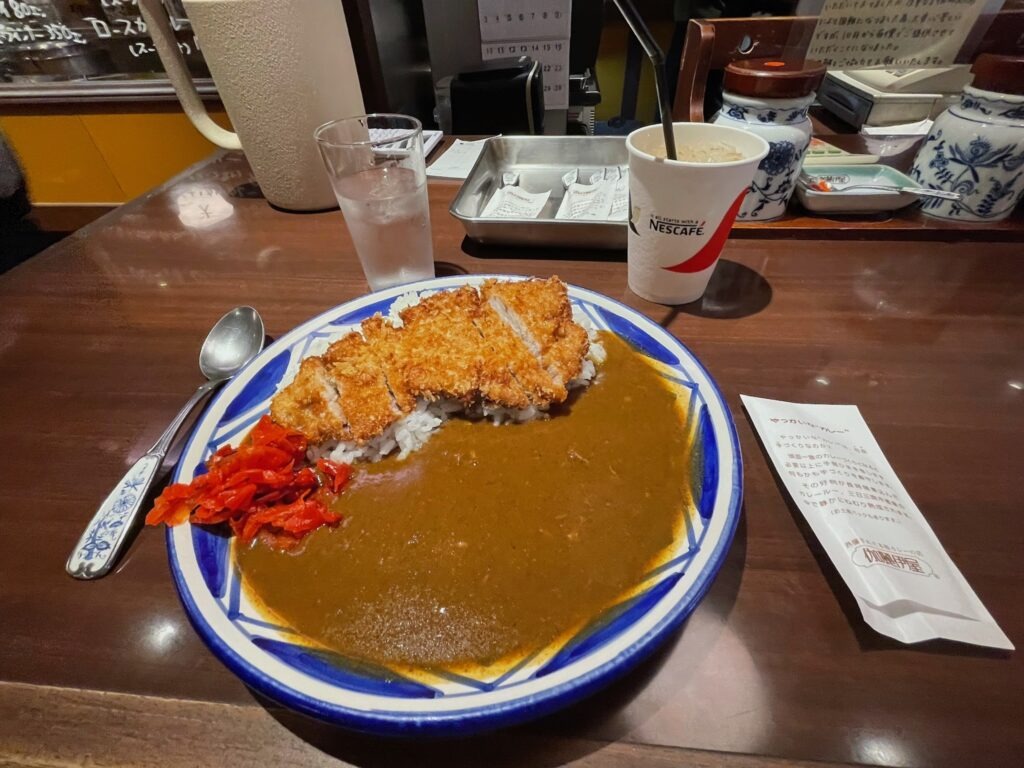
When the troublesome curry arrived, it was perfect: rich, complex, flavorful. Authentic and well-seasoned. Scrumptiously mature.
The Heart of Old Osaka
I got lost walking back to the subway and ended up on a side street that was latticed by narrow cobbled lanes, framed with green bushes and trees, which led to neat wooden homes. I wouldn’t have been surprised to see hobbits emerging from the doorways.
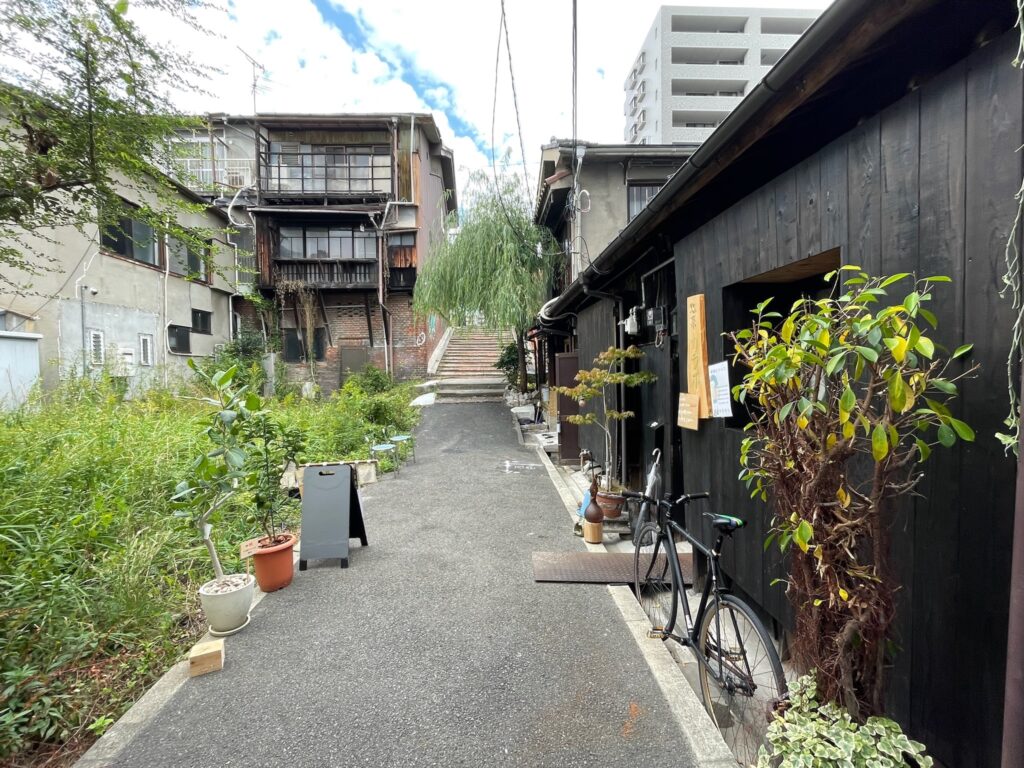
I finally asked a young man passing by if he could direct me to the station, and he kindly said he would be happy to take me there. As we walked, I told him that this was my first visit to the neighborhood and that I was enchanted by it. I asked if he came there often, and he replied, “Oh yes. I really like this neighborhood too. It’s got a lot of traditional shops but with a young energy inside. And no chain stores. And even though it’s in the middle of the city, it’s like a shitamachi – an ‘old town’ with an almost country feeling to it.”
When we reached the hidden stairway to the station, he pointed. “Here you are,” he said. After I thanked him for going out of his way, he smiled and said with a wave, “Come back again!”
I couldn’t stop smiling as I rode the subway back to my hotel. What a totally unexpected and uplifting way to spend my last day in Japan!
As I reflect on this now, a sobering week later, I find myself wandering back in mind to the peaceful lanes of Tanimachi 6-chome and celebrating the serendipities of travel that can bestow such rich, world-weaving rewards.
Thanksgiving Reflections: The Magic of Travel’s Hidden Delights
In a few weeks, I think, we will be celebrating Thanksgiving. I’ll be giving profound thanks for my cherished family and friends, for my beloved colleagues at GeoEx, and for the wonderful travelers who inspire us every day.
But in a way, Thanksgiving came early for me this year, in the form of that unexpected Osaka Gelato Quest, and its timely reminder that with all its turbulences and vicissitudes, the world still remains full of wonders, as it has always been: They’re just waiting for us to find them and embrace them; they’re just waiting for us to let them in.
*************************
Looking to explore Japan’s hidden neighborhoods and local food scenes? Join GeoEx’s expert-led small group trips for authentic off-the-beaten-path experiences. Contact an Expert to learn more.
Thanks you, so much, for the vivid description of this magical place!! 😉
”Old buildings filled with new dreams”! What a lovely combination. And as always, a delightfully quintessential Don George walk through a gentle breath of humanity. Thank you for sharing, and for adding this neighborhood at a scoop of gelato to my Japanese dream trip.
What a lovely story. It’s marvelous how you continue to flaneur your way through this world with its unexpected and surprising richness. I hope you continue to enjoy it for years to come. Happy holidays!
Dear Diana! Thank you so much for your kind words! I feel so blessed to be able to continue to flaneur my way through the world, as you so perfectly put it! And also blessed to have wonderful readers, friends, and fellow travelers like you! Happy Thanksgiving to you and your family!!

